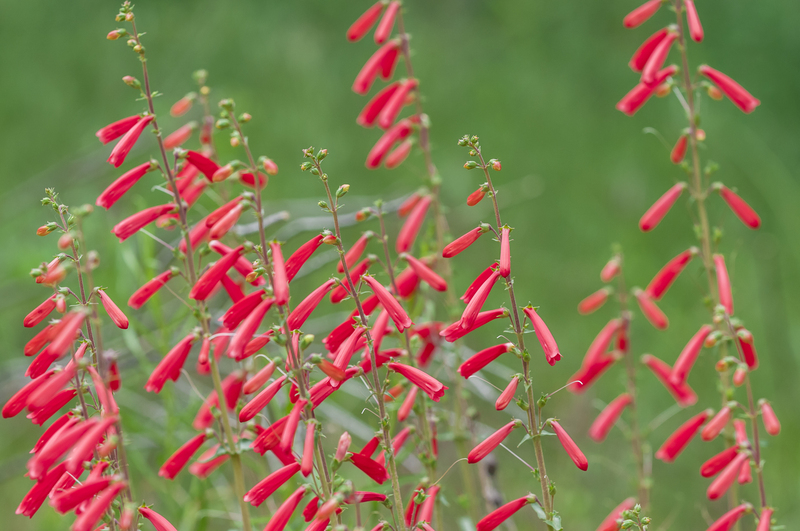Adapt to Any Environment with These 3 Moveable Garden Tips
Are you struggling to maintain your garden because of unpredictable weather, limited space, or frequent moves? Moveable gardening is steadily gaining popularity among urban dwellers, renters, and those who desire flexibility and adaptation. In this comprehensive guide, we'll introduce you to three essential moveable garden tips that will empower you to create a flourishing green space--no matter where you are or what the environment throws your way.

Why Moveable Gardening is the Future
With climatic fluctuations, space limitations, and evolving lifestyles, traditional stationary gardens aren't always feasible. Moveable garden solutions allow you to optimize sunlight, shield plants from harsh weather, and maximize every inch of your home--whether you're living in an apartment, renting a house, or constantly on the go.
- Flexibility: Move your garden to follow the sun, avoid storms, or redecorate on a whim.
- Accessibility: Perfect for balconies, patios, rooftops, or temporary homes.
- Adaptability: React instantly to environmental changes, ensuring your plants thrive in any setting.
By embracing these moveable gardening tips, you'll maximize both your plants' health and your personal convenience.
Tip 1: Use Portable Containers for Effortless Garden Mobility
The cornerstone of adaptable garden design is portability. Garden containers have evolved well beyond simple terra cotta pots. Today, you can choose from a fascinating array of lightweight, durable, and stylish containers to create your own portable garden oasis.
Choosing the Right Containers for Your Mobile Garden
- Material Matters: Opt for lightweight materials like resin, plastic, or fabric grow bags. They are easy to move and often more affordable than stone or ceramic.
- Size Up: Select containers large enough for your plants' root systems but small enough for manageable movement.
- Built-in Mobility: Look for containers with wheels, handles, or casters for ultimate mobility.
Pro Tips for Container Success
- Drainage First: Ensure each container has adequate drainage, preventing root rot and waterlogging.
- Soil Selection: Use a high-quality potting mix appropriate for each plant species--this promotes better growth in confined spaces.
- Group Strategically: Cluster your movable pots according to sun and water requirements for easier care and maximum impact.
By building your moveable garden with containers, you can rearrange, transport, or group your plants whenever you want--a real game-changer for adapting to any environment.
Tip 2: Implement Modular Raised Beds and Planters
If you crave the productivity of a garden bed but need the versatility of a portable system, modular raised beds and planters are your answer. These innovative solutions make it easy to reorganize, expand, or even relocate your mini-farm.
Advantages of Modular Garden Systems
- Easy Assembly & Disassembly: Most modular systems snap together or use minimal hardware, allowing for quick setup or transport.
- Customizable Layouts: Build configurations that suit your current space, then alter as your needs evolve.
- Improved Soil Control: Fill your planters with organic-rich, weed-free soil--perfect for healthy growth!
Modular systems are especially effective for urban moveable gardens, balconies, rooftops, and communal spaces. You can even find planters that stack vertically, making them excellent for maximizing space and sunlight exposure.
Setting Up a Moveable Raised Bed Garden
- Select Your System: Brands like Vegepod, City Pickers, and GreenStalk are popular for their portability and ease of use.
- Prepare for Drainage: Lay a weed barrier or gravel beneath raised beds placed on hard surfaces to promote drainage.
- Choose the Right Plants: Ideal candidates for modular gardens include leafy greens, herbs, compact vegetables, and edible flowers.
- Plan for Mobility: If possible, use stands with lockable casters or lightweight frame materials for easier movement.
A moveable raised bed garden offers a perfect blend of size, productivity, and adaptability, ensuring you can garden in any environment without commitment to a single spot.
Tip 3: Embrace Vertical Gardening Systems
What if you're truly limited on horizontal space or want to add more greenery to balconies, patios, or even inside your home? Vertical gardening is not only stylish and space-saving but also supports an incredibly adaptable gardening setup.
Popular Vertical Gardening Solutions
- Hanging Pots: Suspend small containers on railings, hooks, or wall brackets.
- Living Walls: Install freestanding or wall-mounted pocket planters for a lush "green wall" effect.
- Stackable Planters: Use tiered systems to create a multi-story garden that's easy to move and rearrange.
- Pallet Gardens: Upcycle wooden pallets with landscape fabric and soil for low-cost vertical growing.
Benefits of Moveable Vertical Gardens
- Maximize Small Spaces: Ideal for apartments, balconies, or tiny patios.
- Increase Airflow & Sunlight Exposure: Elevating plants improves their air circulation and access to light.
- Add Privacy & Beauty: A vertical garden doubles as a natural screen and a stunning decor element.
- Easy to Relocate: Most systems can be removed or transported without hassle, especially important for renters or frequent movers.
Whether you choose to grow herbs, trailing vines, succulents, or even strawberries, embracing vertical gardening empowers you to adapt swiftly to any gardening environment.
Bonus: Essential Moveable Garden Tools and Gear
Enhancing your adaptable garden journey requires a few cleverly chosen tools and accessories. Here's a handy list to keep your moveable green space thriving:
- Caddies with Wheels: Slip under heavy pots for effortless movement.
- Collapsible Watering Cans: Space-saving and great for transport.
- Self-Watering Planters: Reduce maintenance and prevent under/overwatering during trips or moves.
- Plant Stands and Saucers: Elevate and contain your containers, boosting drainage and mobility.
- Grow Lights: For those who need to bring plants indoors for seasonal or environmental reasons.
Common Challenges and How to Overcome Them
A moveable gardening approach isn't without its hurdles. Here are some common obstacles and smart solutions:
Challenge 1: Managing Plant Health During Frequent Moves
- Solution: Acclimate plants gradually to changes in light, wind, and temperature. Keep a protective tarp or shade cloth handy for harsher transitions.
Challenge 2: Preventing Water Spills and Soil Loss
- Solution: Use drip trays and mulch surfaces to keep soil in place. Consider moisture-control potting soil blends for less mess.
Challenge 3: Finding the Perfect Spot in Ever-changing Environments
- Solution: Invest in a light meter or use mobile apps to track sun exposure throughout the day. Rotate or shuffle plants as needed to ensure optimal growth.
By proactively addressing these challenges, your moveable gardening system will remain resilient, healthy, and beautiful--indoors or out.
Adapting Your Moveable Garden to Every Season
One of the standout benefits of adaptable mobile gardens is seasonal flexibility. Here's how to optimize your setup year-round:
- Spring & Summer: Relocate containers for maximum sun and easy watering; enjoy rapid growth and frequent blooms.
- Fall: Move sensitive varieties closer to buildings or into sheltered areas as temperatures drop.
- Winter: Bring tender or potted plants indoors, using grow lights or sunny windows. Protect outdoor gardens with frost covers or windbreaks.
Flexible, moveable home gardens thrive by allowing you to adjust your plants' exposure as seasons and weather shift.

Frequently Asked Questions About Moveable Gardens
1. Are moveable gardens suitable for beginners?
Absolutely--moveable garden systems are perfect for those just starting out. They're usually lower-maintenance and provide the freedom to experiment with light, location, and plant types.
2. What are the best plants for portable gardening?
Great choices include herbs (basil, mint, chives), compact vegetables (lettuce, cherry tomatoes, peppers), succulents, annual flowers, and small fruiting plants like strawberries. These thrive with regular movement and adapt readily to containers and vertical planters.
3. How often should I move my mobile garden?
Move as often as your plants need--most frequently to chase optimal sunlight, avoid harsh storms, or adjust for temperature extremes. Always watch your plants for signs of stress after moves and acclimate them gently.
Conclusion: Build Your Dream Garden Anywhere with Moveable Gardening Techniques
Adapting to every environment is easy and rewarding when you embrace moveable gardening tactics. With portable containers, modular raised beds, and innovative vertical gardens, your green thumb will flourish no matter your living situation. These moveable garden tips guarantee that, whether you have a spacious backyard or a compact city balcony, you can enjoy lush, healthy plants all year round.
- Embrace flexibility--move, rotate, and adapt your plants quickly.
- Maximize your space and optimize sunlight in any setting.
- Enjoy endless possibilities--from vibrant flower displays to fresh kitchen herbs--regardless of your address.
Start experimenting with these three moveable garden tips today--and watch your adaptable garden thrive wherever life takes you!
```